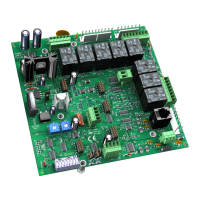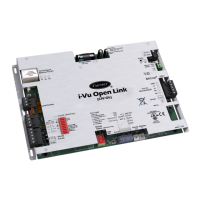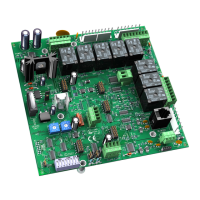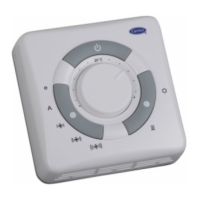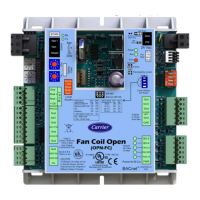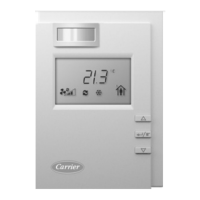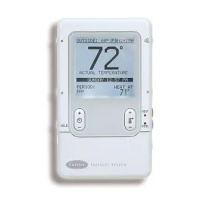Sequence of operation
44 VVT Zone Controller
Occupancy
The VVT Zone Controller's operation depends on the zone's occupancy state as determined by occupancy
schedules or a remote occupancy override.
Occupancy Schedules – An occupancy schedule can be one of the following:
• A local schedule set up directly in the controller using a BACview or Field Assistant.
• A network schedule from an i-Vu internal router. The VVT Zone Controller must be networked to an i-Vu
Open Router or an i-Vu internal router.
• A System Occupancy network point. This point links the controller occupancy to another controller in the
network so that multiple zones can follow the occupancy of another VVT Zone or other controller on the
network.
To set up occupancy schedules, you first define a schedule for each day of the week and then define
schedules for the exceptions, such as holidays. The exceptions can be based on a date, a date range, or a
week and day.
NOTES
• The Occupancy Schedules
• A network schedule downloaded from i-Vu will overwrite a local schedule that was set up in a BACview or
Field Assistant.
property must be enabled (default).
Remote Occupancy Override – The controller monitors its Remote input that is typically connected
to the isolated, dry contact of an occupancy sensor located in the zone. The controller can override the
occupancy state based on whether or not the space is actually occupied. If the occupancy sensor contact is in
the same state as
Occ Override Normal Logic State setting, the zone follows its normal occupancy
schedule. If the contact is in the opposite state, it overrides the zone into the unoccupied mode. The input
can be configured for normally closed or normally opened contact types and is set to Open by default so that
it does not affect the controller occupancy operation if left unused.
Learning Adaptive Optimal Start – This function gradually adjusts the unoccupied setpoints over a
specified period of time to achieve the occupied setpoint by the time scheduled occupancy begins. This
learning adaptive algorithm uses the learned heating capacity and learned cooling capacity
values to calculate the effective setpoints prior to the occupied start time. The algorithm calculates a learned
cooling and heating capacity during the previous unoccupied time. Set the Learning Adaptive
Optimal Start
recovery period from 1 to 4 hours in Optimal Start. When the Learning Adaptive
Optimal Start
routine runs, adjustments are based on the color that is achieved when occupancy begins.
Adjustment amounts are defined in the thermographic color fields located directly above the
Effective Set
Points
graph under Setpoints.
BAS On/Off
– This function allows third party control of the controller occupancy. Occupancy
Schedules
must be set to Disable to use this function. When set to Occupied or Unoccupied,
Optimal Start is automatically disabled.
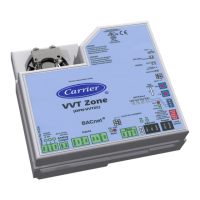
